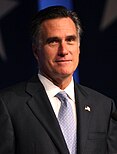United States gubernatorial elections, 2006
|
|
|||||||||||||||||||||||||
|---|---|---|---|---|---|---|---|---|---|---|---|---|---|---|---|---|---|---|---|---|---|---|---|---|---|
|
|||||||||||||||||||||||||
|
38 governorships 36 states; 2 territories |
|||||||||||||||||||||||||
|
|||||||||||||||||||||||||

Results:
Republican holds
Democratic holds
Democratic pickups
|
|||||||||||||||||||||||||
United States gubernatorial elections were held on November 7, 2006 in 36 states and two territories.
The elections coincided with the mid-term elections of the United States Senate and the United States House of Representatives.
Democrats won open Republican-held governorships in Arkansas, Colorado, Massachusetts, New York, and Ohio and defeated one Republican incumbent — Robert Ehrlich of Maryland — while retaining all of their then-held seats.
Voters in the United States territories of Guam (then-Republican held) and the U.S. Virgin Islands (then-Democratic, but term limited) also chose their governors and voters elected a new mayor for the District of Columbia, the District's chief executive.
As part of the 2006 Democratic sweep, Democrats did not lose a single incumbent or open seat to the Republicans in the gubernatorial contests.
The results of the 2006 elections gave Republicans 22 governors to the 28 Democratic governors, a reversal of the numbers held by the respective parties prior to the elections. There were 22 races in states that were previously held by Republicans, and 14 in states previously held by Democrats. Republicans held the majority of governorships from 1995 until 2007.
In 2006, ten governorships were open due to retirement, term limits, or primary loss.
Congressman Jim Nussle was the Republican nominee, while the Democratic Party nominated Iowa Secretary of State Chet Culver, a progressive whose father was a U.S. Senator. An October 11 poll by Rasmussen Reports showed the candidates tied at 42% each. An October 19 Rasmussen Reports poll had Culver leading Nussle 47% to 44%.
...
Wikipedia


